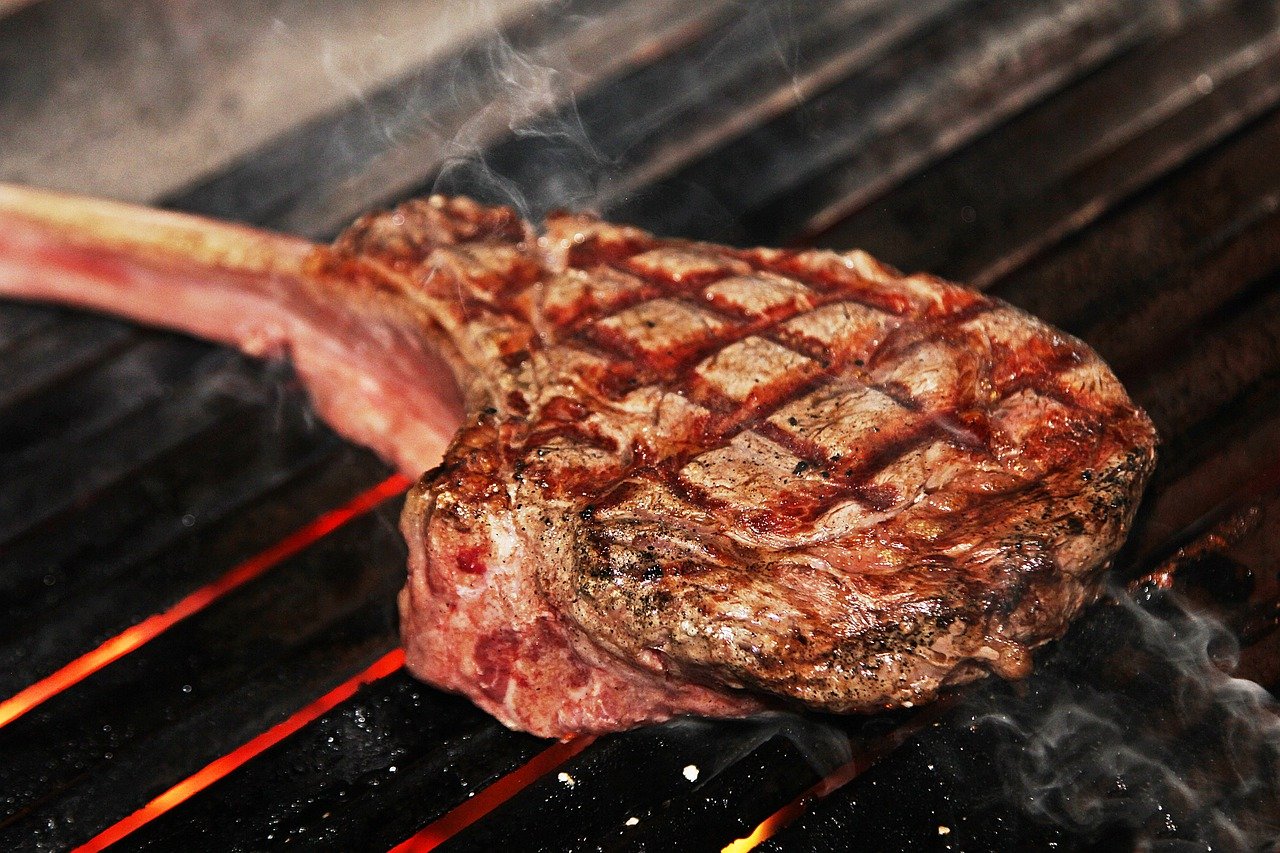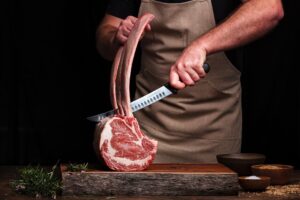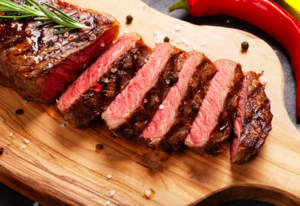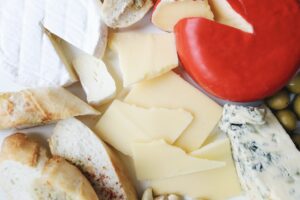Doubtlessly, the smell of grilling steaks is mouth-watering and full of weekend vibes. But which steak cut is the best to grill? We’ve done all the homework for you. The following are 10 best steaks and some tips to grill perfectly. Let’s dive in!
Table of Contents
10 Best Steaks to Grill Ranked
No.1 Best Steak to Grill: Ribeye Cap Steak
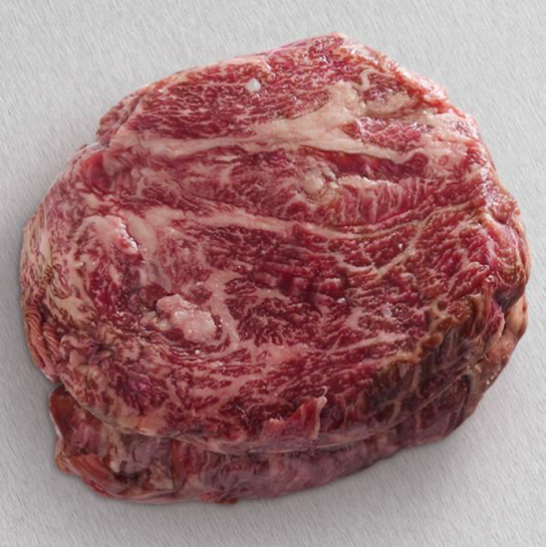
What is Ribeye Cap Steak?
Ribeye Cap Steak is crème de la crème among all steaks in cattle since it has the richest marbling. The cap is actually the outer muscle of the ribeye roll, where the butchers get Ribeye Steaks and Prime Ribs. In other words, you can cut the cap from a Ribeye Steak literally.
The Ribeye Cap can go by many different names including rib cap, deckle, calotte or spinalis dorsi. But for me, the most impressive one is “butcher’s butter” as it vividly shows how the cap is. Ribeye Cap is heavenly marbled which delivers a wonderful tenderness and a brimful of juices as well as melt-in-the-mouth mouthfeel like butter.
I bet most of the people have heard of Ribeye Steak but not many guys know what Ribeye Cap is. This is because the cap is rare, limited and luxurious. The cap is even superior to Ribeye in terms of marbling, only the true beef aficionados know it and get addicted to it. Finding the cap is not easy owing to its rareness, try to search on the prestigious butcher shops.
Features of Ribeye Cap Steak
- Heavenly Rich Marbling
- Very Tender
- Juicy
- Rich Flavor
- Buttery
► Read More: 5 Best Marbled Steak Cuts Ranked & How to Cook
2nd Best Steak to Grill: Ribeye Steak
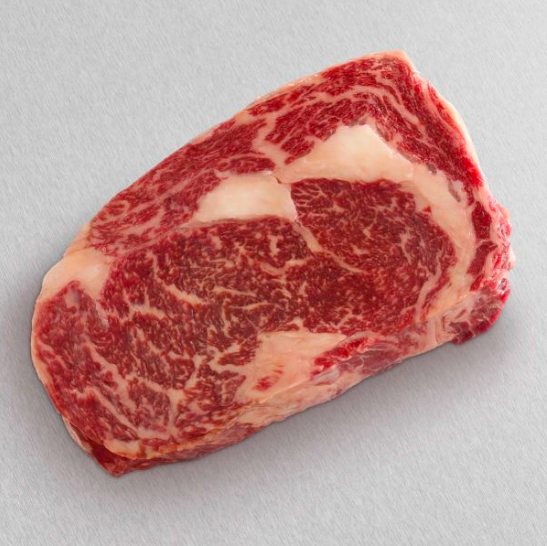
What is Ribeye Steak?
I guess nobody don’t know Ribeye Steak. It is the most famous as well as the most versatile steak cut. Ribeye is ranked high in many aspects such as marbling, tenderness, juiciness and flavor.
This cut comes from the rib primal, which is the main source of premium steak cuts due to the low amount of exercises of the muscles. Hence, the steak cuts from this primal are usually tender and juicy. It’s easy to recognize the Ribeye as there is an eye-like fat at the center of the steak, and that’s also the origin of its name. The whole ribeye includes the cap, plus a beautiful marbling which keeps the meat moist, tender and provides a nice fat essence.
In many butcher shops, there are two options when you are picking a Ribeye Steak, bone-in or boneless, which means whether the steak comes with a rib bone. For instance, a Cowboy Steak is a thick bone-in ribeye while Tomahawk Steak is another version of thick ribeye with a huge rib bone. The bone will enrich the flavor subtly but it will also increase the difficulty of cooking. The meat near the bone will be rarer than the rest area. Yet, you can treat it as a variation and bonus!
Features of Ribeye Steak
- Beautiful Marbling
- Tender
- Juicy
- Flavorful
- Buttery
3rd Best Steak to Grill: New York Strip Steak
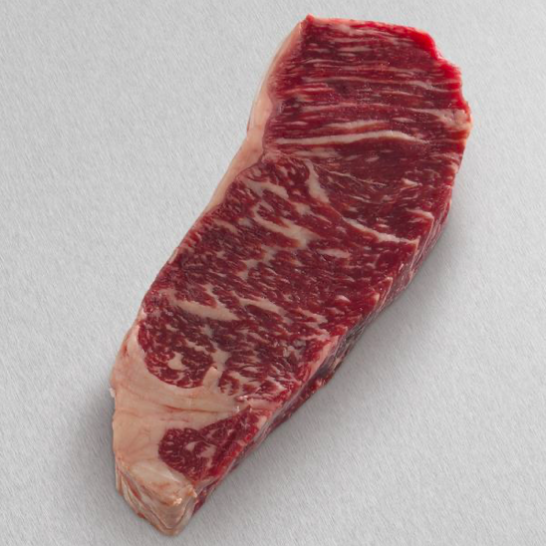
What is a New York Strip Steak?
New York Strip Steak is a cut from the longissimus dorsi muscle which starts from the rib primal to the round primal. And the Strip Steak is the section in loin primal. The part of the muscle moves quite frequently and so it is firm and tight.
However, the NY Strip Steak is fairly tender although it is firm thanks to the great amount of marbling. The level of marbling of the Strip is between Ribeye Steak and Filet Mignon, it is evenly distributed and gives the steak a bold beefy flavor.
The name “New York Strip” was created by Delmonico’s, a legendary Manhattan restaurant, since the 1830s. Typically, “New York Strip” refers to boneless strip steaks, whereas the bone-in strip steaks are called Kansas City Strip Steaks.
Features of New York Strip Steak
- Firm and Tight
- Quite Tender
- Fairly Marbled (between Ribeye Steak and Filet Mignon)
- Bold Beefy Flavor
4. T-Bone Steak / Porterhouse

What is a T-Bone Steak / Porterhouse?
As its name implies, T-Bone Steak is sourced from the loin primal and is featured with a T shape bone which divides the steak into two parts. It is actually the combination of New York Strip Steak and Filet Mignon. The larger side is Strip while the smaller side is Filet. Hence, the T-Bone possesses the characteristics of both steaks, New York Strip Steak is fairly marbled and chewy while Filet Mignon is lean but extremely tender. The fans of this two-for-one cut love the distinct features in a single piece of cut at the same time and the pretty large size.
Porterhouse is actually the same cut with T-Bone Steak with the only difference of the tenderloin size. T-Bone Steak has a smaller piece of tenderloin which is between 0.5 and 1.5 inches; if the tenderloin is bigger than 1.5 inches, it’s Porterhouse.
Features of T-Bone Steak / Porterhouse
- T-shaped Bone
- Combination of Strip Steak and Tenderloin
- Strip Steak: Marbled and Chewy; Tenderloin: Lean and Tender
- Pretty Large
5. Short Ribs

What are Short Ribs?
Short Ribs can be obtained from several parts of a cattle such as brisket, chuck, plate, and rib primals. There are two to five ribs from plate primal which tend to be fattier than short ribs taken from other locations.
No matter where the short ribs come from, all of them are scrumptious thanks to the perfect match of meat, fat and rib bone. The great deal of meat gives you satisfied bites while the marrow-filled rib bone and layers of fat enrich the flavor. If you love to solely take big bites of the meat, pick the Boneless Short Ribs.
There are two ways of cutting for Bone-In Short Ribs—English Cut and Flanken Cut. English Cut is the way of cutting along the rib bone and thus each piece of short rib includes a long bone. For another way, Flanken Cut is cross-cutting a few rib bones and so a single strip of short rib contains 3 to 5 sawed pieces of bone.
Short ribs are popular in different styles of cooking, especially in Korean cuisine. Galbi (or Kalbi) is Korean-style grilled short ribs. The ribs are usually marinated with soy and brown sugar based marinade, and served raw. The diners will then char on a grill by themselves which is unbelievably delicious. If you prefer a richer marbling, opt for Wagyu Short Ribs.
Features of Short Ribs
- With Marrow-filled Rib Bone
- Perfect Combination of Meat and Fat
► Read More: 9 Types of Ribs of Pork, Beef & Lamb | Must-Read Guide for Ribs Fans
6. Flat Iron

What is a Flat Iron?
Flat Iron is sourced from the chuck primal which is part of the top blade muscle of the cattle’s shoulder, that’s why it is also named Top Blade Steak.
Steak cuts from the chuck are generally tough since the muscles work quite hard, but Flat Iron is an exception. The professional butchers tried to find some special cases within this frequently exercised primal, and there it is.
Meat scientists found that Flat Iron is the second most tender cut just after Filet Mignon. The grain of this cut is extremely fine and nearly no connective tissues. Plus, this cut has an amazingly dense marbling that makes it flavorful, juicy and creamy. And owing to the constant use of the surrounding muscle of the shoulder, it is overflowing with beefy flavor. Above all, Flat Iron is budget-friendly which only costs you half of the Filet Mignon. All these features come together in this fantastic cut.
Features of Flat Iron
- Extremely Tender (second only to Filet Mignon)
- Dense Marbling
- Juicy
- Cost Less
► Read More: 5 Most Tender Steak Cuts Ranked and How to Cook
7. Top Sirloin Steak

What is a Top Sirloin Steak?
The loin primal consists of two parts, short loin and sirloin subprimals. Short loin is connected to the rib primal while the sirloin is posterior to the short loin and near the butt. And the sirloin subprimal can be further divided into sirloin, tenderloin, top sirloin and bottom sirloin sections. Consequently, there are many different types of sirloin steaks depending on which section it is obtained from.
Sirloin Steak is lean with a mild beef flavor just like Filet Mignon. And Top Sirloin Steak is the finest among all sirloin steaks as it is the most tender one; hence it’s with a higher price tag. In most cases, it is stated clearly on the package for sale, whereas the Bottom Sirloin Steak is simply marked as “sirloin steak” because it is less tender.
Features of Top Sirloin Steak
- Fairly Tender
- Lean
- Mild Beef Flavor
► Read More: 8 Leanest Steak Cuts / Healthiest Steak Cuts Best Fit For Weight Loss
8. Flank Steak

What is a Flank Steak?
Flank Steak comes from the flank primal just under the loin which is popular in Latin America. It is a single muscle of the cattle belly which works regularly. Therefore, it has a robust beefy flavor but also contains a lot of connective tissue and low amount of fat.
To optimize the texture, use some fruit marinades like pineapple as tenderizers which can break down the connective tissue. This also adds an extra kick of flavor to the steak. Because of the broad shape, Flank Steak is easy to carve and serve. Yet, please cut against the coarse grain for the best result.
Features of Flank Steak
- Very Lean
- Quite Tough
- Robust Beefy Flavor
9. Chuck Eye Steak

What is Chuck Eye Steak?
Chuck Eye Steak is located at the 5th rib of a cattle while the source of Ribeye Steaks is just near it at the 6th to 12th ribs. Additionally, they both come from the same muscle. Therefore, their features are somewhat alike.
Chuck Eye Steak is well-marbled and tender just like the Ribeye Steak but it costs much less. So the Chuck Eye is also called “poor man’s rib-eye”. But of course, you get what you pay for, Ribeye is finer. Moreover, since the surrounding muscles of the chuck gets a great amount of workout, Chuck Eye Steak has a hearty beef flavor.
If you want to enjoy the highly marbled Wagyu beef with a lower budget, Chuck Eye Wagyu Steak is a great choice.
Features of Chuck Eye Steak
- Well Marbled
- Fairly Tender
- Hearty Beef Flavor
► Read More: 5 Best Cheap Cuts of Steak (spend you <$20) that are Yummy!
10. Tri-Tip
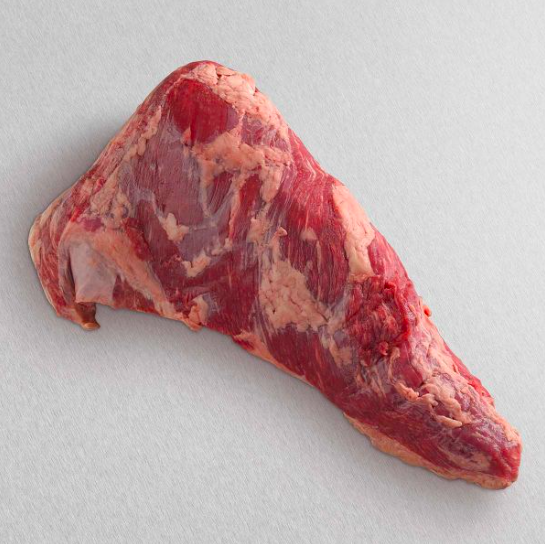
What is a Tri-Tip?
Tri-Tip is taken from the bottom sirloin which is in triangular tip shape that connects to the round and flank primal, hence the name.
Owing to the hard-working movement of muscles, this cut is considerably chewy but brimming with beef flavor and juices. The whole piece of Tri-Tip is quite large and you can serve it as a roast or cut it into pieces of steaks. Bear in mind that slice this cut against the grain for the best mouthfeel. When it’s cut into steaks, it is customarily referred to as Newport Steak.
It has other names when it goes to different countries such as “maminha” in Brazil and “aiguillette baronne” in France.
Features of Tri-Tip
- Considerably Chewy
- Brimming with Beef Flavor
- Juicy
- Quite Large
4 Top Tips for Grilling Steaks
Tips 1. Best Steak Grilling Temperature
Temperature is the key to grill steaks. I know, when you hear the grill start sizzling and get a lot of smoke, you will be tense and lower the heat immediately. However, this is the fetal error for grilling—the temperature is not high enough.
Please heat your grill up since the Maillard reaction will only occur under high temperature. It is a chemical reaction that forms the desirable brown crusty surface on a steak. Apart from the nice appearance and texture, the crust also helps seal the meat juice which keeps the steak moist and juicy.
Moreover, grilling steak over high heat can shorten the cooking time and reach the desired temperature fast. As a result, the grilled steak will be more tender and juicier than the steak grilled for a long time.

The best steak grill temperature is about 450°F to 550°F (230°C to 290°C). You can measure it by a meat thermometer. Or if you can’t register the exact temperature, test with your hand. If you are not able to hold your hand an inch above the grill for more than 2 seconds, it’s hot enough.
In short, to achieve a nicely browned and tender steak with a burst of juice, make sure that you heat your grill as hot as possible and thaw the steak before grilling. Otherwise, you will only get a dry, tough and gray steak instead.
Tips 2. Grill Outside

Grilling is somewhat similar to smoking as both cooking methods produce a great amount of smoke. When the grill reaches the high temperature which is what we aim for, it will generate a lot of smoke especially when the melted fat drops. Of course, a range hood could help…a bit. I guess you don’t want that much smoke left in your house. Therefore, to avoid the grill “smoking” your furniture, do it in the garden.
You can choose to grill on a gas grill, charcoal grill or wood grill. It’s just up to you but I personally love the smell of charcoal.
► Read More: 10 Best Charcoal Grill for Different Needs in 2022 | Best Portable/Combo…
Tips 3. What If No Outdoor Grill? Get a Pan!
Of course, grilling outside is what we want, but reality is not all roses. If you don’t have an outdoor grill or are not able to grill outdoors, get a pan!

Cooking the steak on the stovetop with a grill pan is as perfect as grilling outside. But it’s a must to use the pan that is made of cast iron. This is because cast iron can reach and stay at very high temperatures which is a necessary criteria of choosing a pan for grilling as stated previously. Yet, cast iron is heavy and requires a lot of effort to take care of, especially there are ridges which make the cleansing work difficult. But it’s worth it.
Bear in mind that don’t overcrowd the pan. Putting too many steaks in a pan at the same time will disperse the heat energy and result in inadequate heat to carry the Maillard reaction. A regular pan can grill two average-sized steaks at one time. Also, remember to keep windows open for ventilation and open the vent hood on high when grilling indoors. Alternatively, broiling the steak in an oven is also fantastic.
Tips 4. How To Get Grill Marks On Steak?
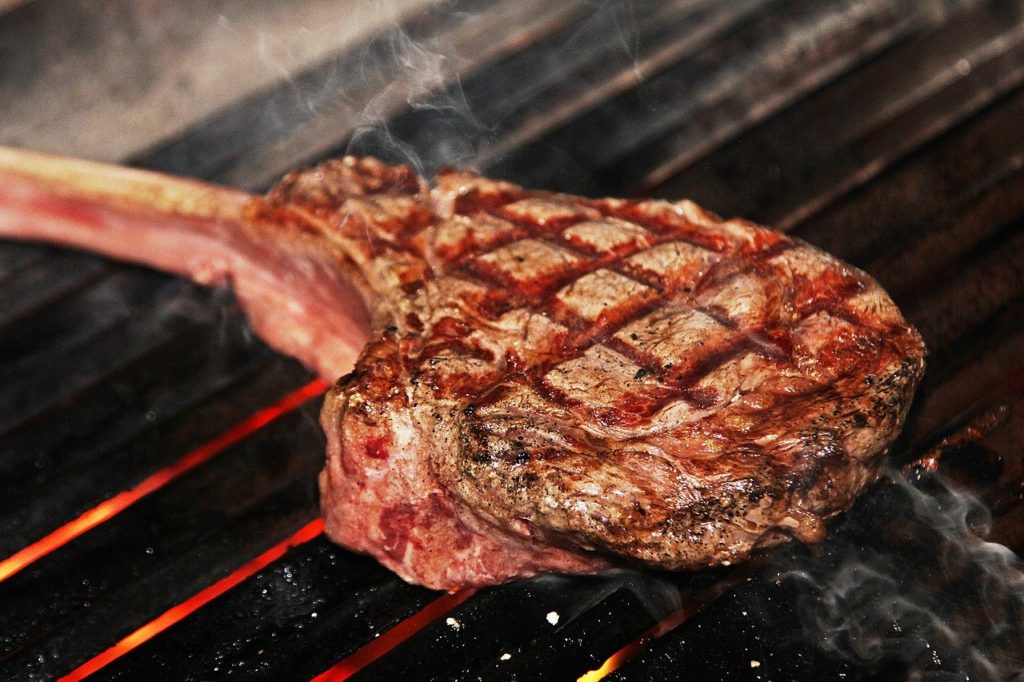
The grill marks lift the steak to the next level just like what you will see in the five-star steakhouses. And the good news is that it’s not hard to do it at home. Here is a step-by-step guide for you:
- Thaw the steak completely.
- Preheat the grill to 450°F to 550°F (230°C to 290°C).
- Place the steak at 45° (the ends pointing at 4 and 10 o’clock).
- When juices start to overflow to the top, turn the steak 180° (the ends pointing at 2 and 8 o’clock).
- After a minute, flip the steak to another side and grill until it reaches the desired temperature.
- Remove the steak from the grill when the thermometer registers 5-10°F lower than the temperature of desired doneness. It is to avoid overcooking as the internal temperature will keep rising due to the residual heat.
- Rest it for 5-10 minutes which allows the juices to redistribute inside the meat. If you slice the steak immediately, the juices will all be gone.
Summary
So now you know what steaks to prepare for your next grilling gathering, and how to grill yummy steaks with some photogenic grill marks like a pro. Your friends and family must be surprised by your spurt of grilling skills and knowledge. Bookmark this list of 10 best steaks to grill for the coming grilling season!
► Read More: 20 Best Steak Cuts with Ranking (A Complete Guide to Know Your Cuts)
► Read More: 8 Different Types of Grill – Choose The One You Love!

